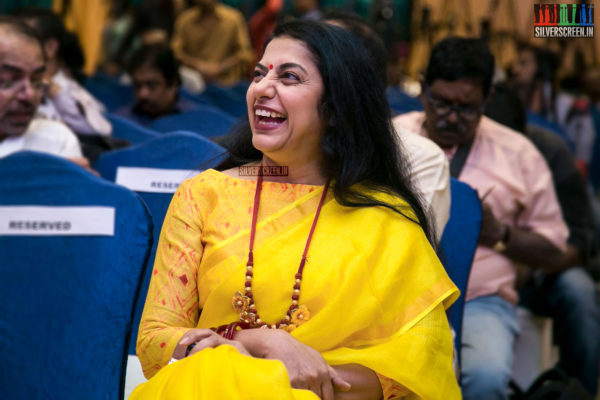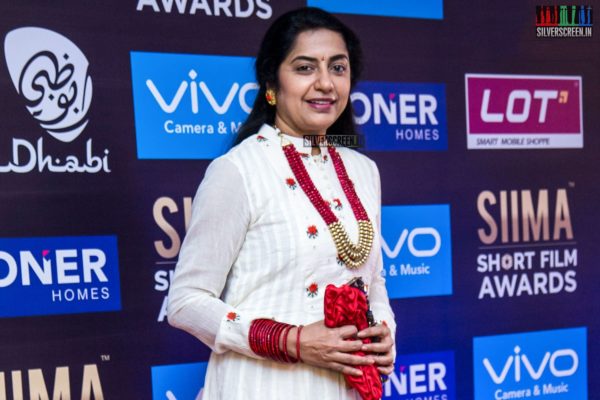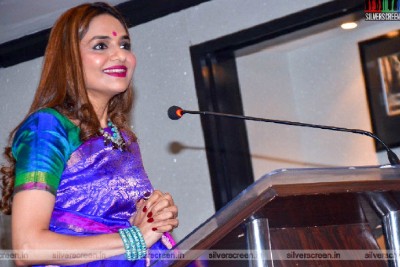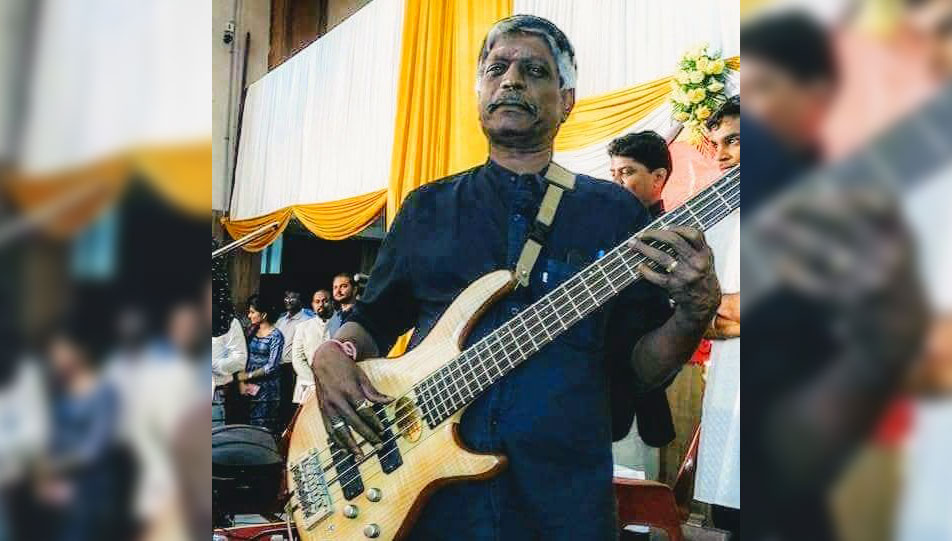In a first-of-its kind project in Tamil cinema, five filmmakers joined hands in the midst of the Covid-19 pandemic to create an anthology of five short films, all rooted to a message of hope.
Putham Pudhu Kaalai, directed by Sudha Kongara, Gautham Vasudev Menon, Suhasini Mani Ratman, Rajiv Menon, and Karthik Subbaraj was set in and filmed through the Covid-19 related lockdown in the country.
Among the five short films is Coffee, Anyone?, directed by Suhasini in which a family reunites during the pandemic.
“My film is about hope, resilience and family,” says the director, who is making a comeback in filmmaking after Indira in 1996.
While the first three weeks of the lockdown passed quickly, things changed for Suhasini soon after that. “We thought it was only going to be for 21 days, we never thought it was going to be for six months. When I thought that I’m scared and I don’t know what is going to happen next, what immediately came to my mind was that this is going to be the frame of mind of everybody else too. If there’s any way I can keep them engaged for an hour or two, it’ll be nice. So, I told my husband I want to go live on Instagram. I started an Instagram Live every evening from 5 pm to 6pm for 21 days. My time went in preparing the script and getting the people organised, 21 days just flew by very easily. After that is when I felt a vacuum,” she says.
In an interview with Swathy R Iyer, she talks about filming through a pandemic, navigating the new normal on set and writing a script with physical distancing norms in mind.

Suhasini at the Keni Audio Launch
How has the lockdown been for you in the past few months?
Things had settled down; we had learnt to live within our means. I still hadn’t gone out at all; I was still at home. This is when I wrote a script and I shot a short film on my iPhone. That was the beginning and then I wrote five other stories and the sixth story is what you’re going to see on October 16. I am very happy that that is the one that is coming out first. My latest work is what is going to be seen by people first.
How many days was Coffee, Anyone? shot in?
It was shot in four days. I was allowed only three days but I told them I have two senior citizens who are above 80 so I can’t make them stress or work too hard. So, I need to work only half days with them. At that point, in June and July, traffic was not allowed after 6 pm. Cars were stopped by cops and the drivers couldn’t go back home. So, we had to shoot only from 7 am until 5 pm. The night scenes were so difficult and all of us must have faced the same problem. We couldn’t do night scenes. So, we had to put black cloth around and shoot.
What is the new normal for filming through a pandemic?
I’m very happy because big units always scared me. Huge units with number of caravans waiting- I always think from the producer’s point of view. Where is the place for these caravans to be parked? The city is so densely populated. Shooting in the city in a house on the street where all these caravans are parked; where do you cook for all of them? Where do they sit between shots? That way, the new normal- having only 50 people or 75 people- is welcome. But having said that, my husband is making a film where we need about 1,000 people a day. So, the new normal is not going to suit that kind of film. Rajamouli is making another film-he cannot shoot with 75 people; it’s not going to happen. So, we have to find the balance between normal and new normal.
A lot of people have been sharing pictures of films being shot through the pandemic with necessary precautions. What is the new normal on set?
I shot in a house that is empty, which is close to my house. We could walk to the location. By car, we could take only one person, three people couldn’t sit in a car. I took another place which again belongs to us because we couldn’t shoot in just one house. We wanted some variation, sunlight and all that. We shot in another place which is our office. And then I shot in an NGO. I shot in these three places. In all these three places, I made sure that two weeks earlier, nobody stepped in. We started shooting on July 8. On July 6, I had gone with my cinematographer to fix the location. A week earlier, I had gone alone with all precautions to set up the pictures, furniture, the beds. We had to convert one room into a patient’s room with an oxygen cylinder and all the medication and the trays and things like that. Outside, it felt like getting into a hospital. So many sanitisers kept and every one hour we had to go and wash our hands and all of us had to wear masks and gloves.
More than deciding which scene comes first, I was telling ‘Kathadi Ramamurthy sir stays in that room. Nobody else steps into that room’. My mother also acted so she stayed in another room with me because she lives with me. The sound recorder stays only in the dining room, he doesn’t come inside. In fact, he would give us the cable and we would plug it in. I learnt how to call for a shot.
Earlier it was ‘Start sound, roll camera, action!’ Now, it is ‘Start sound, roll camera, masks off and then action’. Once the shot is okay, ‘Shot okay, please wear your masks’. And some scenes, we realised that all of us were wearing masks when it was not needed. We had to redo those shots! It’s a lot of work for the artists now. We used to have assistants to arrange costumes, makeup and food but now we have to pick up our food because it’s not safe. We cannot be touched by anybody. As actors on set, we can’t have anything that is personal- something like a pen, a wallet or an earring or even a phone. But once we get in front of the camera, we forget everything. That is the magic of cinema.
Did you also have to think about physical distancing while writing the script?
Yes! For example, I had a scene where I had to hug Anu. She gives me some good news and I go near her but she says ‘Social distancing! Don’t touch me’. And for another shot where a father and daughter were hugging each other, I had to seek permission from the actor before I wrote it. “Is it okay? Or should I just say they were holding hands?” So he said,”Go ahead and do the shot. Don’t compromise because of the pandemic.”
Some filmmakers say that OTT gives them more creative freedom and room to experiment. What are your thoughts on this?
I’m sure it’s true because it’s very difficult to keep the audience inside an auditorium, especially in a restless world. People are just looking at their phones and not even looking at the screen. To keep them engaged, you’ll have to do all kinds of tricks and magic and gimmicks. This is what a normal feature film requires. In OTT, it’s not like that, you can relax and do films how people did them 20, 30 years ago.

Suhasini Maniratnam (4)
Is there a resistance among the film fraternity in adapting to direct to OTT releases?
There is a film distributor, there is an exhibitor and then there are film financiers. So, the chain of command is kind of affected if the films are going direct to OTT. So, there is a structure for film releases and now from the producer it’s directly going to the audience through OTT. So, there will be a lot of resistance because this is what has been done in 100 years of cinema and suddenly to go into a different platform-there is going to be resistance. But there is going to be a compromise, like how television came in and affected the theatre collection. Still, television and cinema co-exist. Similarly, OTT should also co-exist along with theatre, especially during a pandemic. OTT is the only saviour for people who are at home so it’s only natural that films should release in OTT.
What is the biggest difference in creating a film for direct to OTT release compared to theatrical releases?
A film like this would not have been possible on the big screen because there are five of us who are directing. And all out stories are different.
The other thing is, I love binge watching. For me, a two-hour or a three-and-a-half-hour film is not enough. I want more. The same story, if you tell me in 10 episodes of one hour each, I will be happy. There are people like me who are glued to OTT platforms; so for them, it is a different way of writing. The only difference is in writing, not in performance or staging or the concept. It’s only the writing where there is a slight difference between OTT and theatrical release.
Could you tell us a bit more about your character in Putham Pudhu Kaalai?
Recommended
It’s a mixture of mine and my sister’s character. She’s a control freak, lives in the UK and when she sees a problem, she’s immediately thinking of the solution. A problem does not deter her from going ahead with life. At the same time, she is soft spoken. So, I combined my role with my sister’s personality. In fact, I asked her to read the script and tried to speak like her in the film. Not like somebody who is from Chennai but somebody who is from Manchester or Lancaster and who visits their parents only once in a while. My character’s name is Valli. My younger sister is Saraswathi and the third sister Shruthi is Ramya. So, Valli, Saraswathi and Ramya.
I look forward to watching Putham Pudhu Kaalai when it releases on October 16.
Yes! I haven’t seen the other films either so, like you, I am also looking forward to watching them!
Putham Pudhu Kaalai will be streaming on Amazon Prime Video from October 16.



